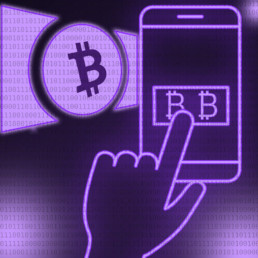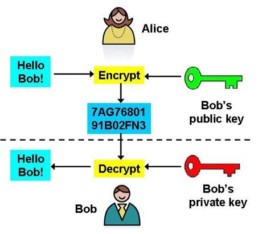BlockEstate real estate security token: STO Analysis
Author: VlaSem / Source: Hacked: Hacking Finance

BlockEstate is planning to launch its very own security token offering (STO). According to the official whitepaper, the idea behind the project is pretty simple:

Proceeds from the STO will form a fund that can then be used to purchase promising real estate in U.S. (North and South Carolina) with profits from the leasing or resale of the real estate being used to buy out and eventually burn the native token, a.k.a. BEAT. This method will increase the cost of the tokens over time. The remaining profit goes to the acquisition of new real estate and the cycle continues.

The investment will be of two types: long-term and stable assets which are expected to get a 6-9% per annum and high-yielding but risky assets with an expected yield of 15-30% per annum.
The investment scheme is further described in the whitepaper. In particular:

Token
Thanks to its partnership with Polymath, which is responsible for the release of the BEAT security token, the underlying asset will be built according to the ST-20 standard on the Ethereum blockchain. The total number of tokens offered for sale is 100 million but the team has the right to issue an additional 10% for its members in the case of a full collection of caps and an increase in the fund’s estimate of at least 25%. This tokens will serve as a form of performance fee with the BlockEstate team. Team tokens are locked for five years.
In terms of the distribution of proceeds from the STO, the main part (93-99%) in the first year will go to direct investment in long-term real estate projects as described in the scheme above; 0.5% per quarter for operating expenses; and 1-7% of the fund’s value will be held in dollars as a reserve.
Profit Sharing...
‘Bull Cross’ Points to Positive Bitcoin Market Shift
Author: Omkar Godbole / Source: CoinDesk
View
- Bitcoin’s three-day chart is showing a bullish crossover of the 5- and 10-day exponential moving averages for the first time since July. The crossover looks decisive as both EMAs are now trending north, validating the bearish-to-bullish trend change signaled by the high-volume triangle breakout seen on the 3-day chart.
- The cryptocurrency could test December highs above $4,200 in the near term.
- A minor pullback to $3,800 may be seen in the next 24 hours, as signs of bullish exhaustion have emerged on the hourly and 4-hour charts.
- The bullish case would weaken if BTC finds acceptance below $3,614 (the low of the previous three-day candle), but that currently looks unlikely.
A much-followed bitcoin (BTC) price indicator has turned bullish for the first time in seven months, indicating a trend change in the market.
On the three-day chart, the 5-candle exponential moving average (EMA) has crossed the 10-candle EMA from below – the first decisive bullish crossover since July 17, 2018.
Back then, BTC was trading above $7,300 and the crossover was followed by a rally to highs above $8,400 on July 24.
Moving average crossovers help identify shifts in momentum. A bearish-to-bullish trend change is confirmed when a short-term moving average crosses through a long-term average from below.
Many would argue that EMA crossovers are lagging indicators. While that is true, crossovers between the short duration averages help traders distinguish between bullish and bearish scenarios. The long-term MA crossovers like the “golden cross” (bullish crossover of the...
Bitcoin (BTC) transaction average & median fees
Author: Peter Ryan / Source: CoinDesk
Transaction fees make the bitcoin blockchain go round. The miners are compensated for their efforts, not only through inflationary block rewards but also through fees charged to users for adding their transaction to blocks. While fees on average make up about 4% of the total miner revenue per day, with the lion’s share coming from block rewards, sometimes economic shocks cause those fees to rise.

The average fee per transaction is approximately $1.63 with the median being $0.88 over the past five years. The fees are the prices charged for a transaction to get into the limited space of a 1 MB block that occurs every 10 minutes. This results in about 1,800 transactions (~556 average transaction size in bytes) that are able to fit into a block. If the standard 144 blocks are mined per day, we observe a ceiling of about 260,000 transactions per day. Thus there is always a backlog of unconfirmed transactions that reside in the mempool awaiting miners to select them for inclusion in the blockchain.

According to Blockchain.Info, there are about 3.4 million bytes awaiting inclusion in the mempool. Miners will usually include the transaction with the highest fees and work their way down as capacity dwindles to the lower fee transactions. Imagine you are commuting to work and...
Coinbase users can now withdraw Bitcoin SV balances to external wallets
Coinbase Finally Makes Bitcoin SV Funds Available for Withdrawal
If you’re a Coinbase user, you may have seen some new tokens on your account. The Bitcoin Cash chain split into two different chains back in November. It means that if you held Bitcoin Cash on November 15, you became the lucky owner of Bitcoin SV and Bitcoin ABC. And Coinbase just started handing out Bitcoin SV to its users if you’re involved in the split.
The split happened because Bitcoin Cash developers couldn’t agree on an upgrade. Some developers backed an upgrade to the code called Bitcoin ABC while others defended a more conservative update dubbed Bitcoin Satoshi Vision (Bitcoin SV).
Author: Ana Alexandre / Source: Cointelegraph

Major American cryptocurrency exchange Coinbase now allows its users to withdraw Bitcoin SV (BSV) balances to external wallets, according to an announcement published on Feb. 14.
BSV appeared following a hard fork in the Bitcoin Cash (BCH) blockchain in November of last year. The for resulted in two new coins; Bitcoin SV and Bitcoin ABC. The camp for Bitcoin SV (Satoshi’s Vision) was lead by Australian computer scientist Craig Wright, who has previously declared himself to be Bitcoin creator Satoshi Nakamoto.
After the hard fork, Coinbase users holding BCH received an equal amount of BSV, however the exchange has, until now, not provided an option for...
JPMorgan to Launch JPM Coin Digital Currency
JP Morgan is rolling out the first US bank-backed cryptocurrency to speed up payments.
In a move commentators may see as unlikely, the multinational lender will use its newly developed asset, dubbed “JPM Coin,” to increase settlement efficiency, initially within three of its operations.
Speaking to CNBC, Umar Farooq, who leads JPM’s blockchain focus, appeared buoyant on blockchain technology’s perspectives at the bank.
“So anything that currently exists in the world, as that moves onto the blockchain, this would be the payment leg for that transaction,” he told the network:
“The applications are frankly quite endless; anything where you have a distributed ledger which involves corporations or institutions can use this.”
JPM Coin will initially focus on international settlements by major corporations, helping speed up transactions that currently take a day or longer using extant options such as SWIFT.
Author: Nathan Reiff / Source: Investopedia
JPMorgan Chase & Co. has officially become the first U.S. bank to launch its own digital token representing a fiat currency. Per a press release and interview issued on Valentine's Day, the bank has announced the creation of JPM Coin, a blockchain-based technology which will facilitate the transfer of payments between institutional clients. The coin has important differences from preexisting cryptocurrencies like bitcoin, primarily because it is redeemable at a 1:1 ratio for fiat currency held by JPMorgan.
JPM Coin is essentially a tool to help with the instantaneous transferring of payments between some of JPMorgan's clients. In order for an exchange of money between client parties to take place over a blockchain ledger, a digital currency must be used to facilitate the transaction. JPM Coin is the tool which helps to complete that process in a more efficient manner than traditional settlements.
JPM Coin itself is not money in the traditional sense. Rather, it is a digital token which represents U.S. dollars which are held by JPMorgan Chase. It maintains a value equal to one USD. Assuming that JPMorgan Chase deems the initial launch of JPM Coin to be successful, the bank has indicated its plans to use JPM Coin for additional currencies as well in the future.
The process by which clients will utilize JPM Coin is relatively straightforward. First, a client deposits a sum in a particular account and receives corresponding JPM Coins. Next, these coins can be used to facilitate transactions across a blockchain network and...
Mainbloq launches Streaming Smart Order Router for trading cryptocurrency
We are thrilled to officially release our first "TradeBloq" module which is the first of its kind, and a critical part of the infrastructure needed for the digital asset markets to scale efficiently.

- Mainbloq offers best execution to sophisticated digital asset traders through their xSOR Smart Order Router which has direct, streaming connections to exchanges for the fastest and best execution.
- Their Smart Order Router is live and currently trading cryptocurrency for their clients.
- Each client receives a dedicated Smart Order Router to execute from.
- The Smart Order Router can be used stand-alone or can be integrated into other trading platforms via API.
Mainbloq launched their Streaming Smart Order Router for trading digital assets. The Router has direct market access via streaming connections to exchanges enabling the fastest execution. It executes cross-exchange trades for the best price with the click of one button.
"We've heard a lot of the other platforms talk about their plans to build a Smart Order Router," said CEO Peter Bordes, "but we are live today and know we have the best, most sophisticated technology. Our system is built by a team of Wall Street trading veterans looking to bring the sophistication of the street to digital assets."
"Not all smart order routers are created equal," said CIO Marc Deveaux, "The purpose of a Smart Order Router is best execution, so if you're using a third party servers and APIs you're already behind. We create direct, streaming connections to exchanges to snipe as quickly as possible. Our process for normalizing data is unparalleled."
Mainbloq's Smart Order Router currently has connections to over 100 exchanges and can trade over 30,000 currency pairs.
"This is just the beginning," said Peter Bordes. "We're building a best-in-class cloud-based modular platform joining data, tools, research, and insights for digital assets. It's time that crypto got more sophisticated."
About Mainbloq
Mainbloq is a data, research, and technology company focusing on blockchain and digital assets. Their streaming Smart Order Router gives clients access to cross-exchange pools of liquidity with direct, streaming connections to exchanges for the fastest and best execution. Mainbloq offers a cloud-based modular platform, and suite of trading algorithms, the ability for clients to integrate their own algorithms, and consulting services to help client's execute on their trading strategies. Mainbloq is building the best-in-class platform for researching and trading digital assets. For more information visit www.mainbloq.io.
Contact
Ryan Kuiken
[email protected]
VP, Sales and Business Development
Future of Cryptocurrency: A Complete Overview
Today, crypto-currencies have become a worldwide phenomenon known to most people.
Banks, governments and many companies are aware of its importance. Industries from E-commerce development companies, Fintech to logistics, and digital marketing are all trying to justify its importance their use of crypto-currencies, even if they are still a little geeky and misunderstood by most people, but banks, governments, and many businesses are aware of its importance as a global digital transformation layer.
What is cryptocurrency?
The term cryptocurrency refers to cryptology and currency of course. Here, the term crypto reminds us of the Greek word Kruptos which means hidden. Moreover, it is used in the prefix to designate hidden or little-known practices as in cryptozoology. Be careful however, cryptocurrency does not mean hidden currency! Transparency is what makes this system a rolling business, we will come back to it later. Here, we speak of crypto in the sense that the information relating to the holders of funds is not retained by any "governing entity". Nobody will remember your personal details.
What are cryptocurrencies for?
Cryptocurrencies are used as fiduciary money in general. They circulate for the payment of goods and services abroad according to the value which they are attributed. These values are of course predefined and are influenced by the popularity of cryptocurrency on the market. It should be known that cryptocurrencies that are losing popularity are also losing their value. The more cryptocurrency you have, the more you will be able to buy goods and services payable by this virtual currency. One YouTuber even experienced living with bitcoin cryptocurrency for 30 days and he kept his bet except in public transport.
So, Cryptocurrency allows you to pay your rent, food, clothes, and much more if you go to sellers or renters who use it as an official bargaining chip. If you travel to the US for example, you will be able to fully enjoy the bitcoins you've saved recently. Aside from that, cryptocurrencies are also put on sale. To get some, you will have to buy some.
However, it is possible to obtain it by other means, but so far it is the most adopted way in the world to have it. When you bought your cryptocurrency, you should always check the prices before spending them. Just to be vigilant, the best is to make sure you have real values before you do anything. Indeed, if you spend your virtual currencies when they lose in value you will be well disappointed. So, between buying and spending your cryptocurrency, you always have to be aware of trends.
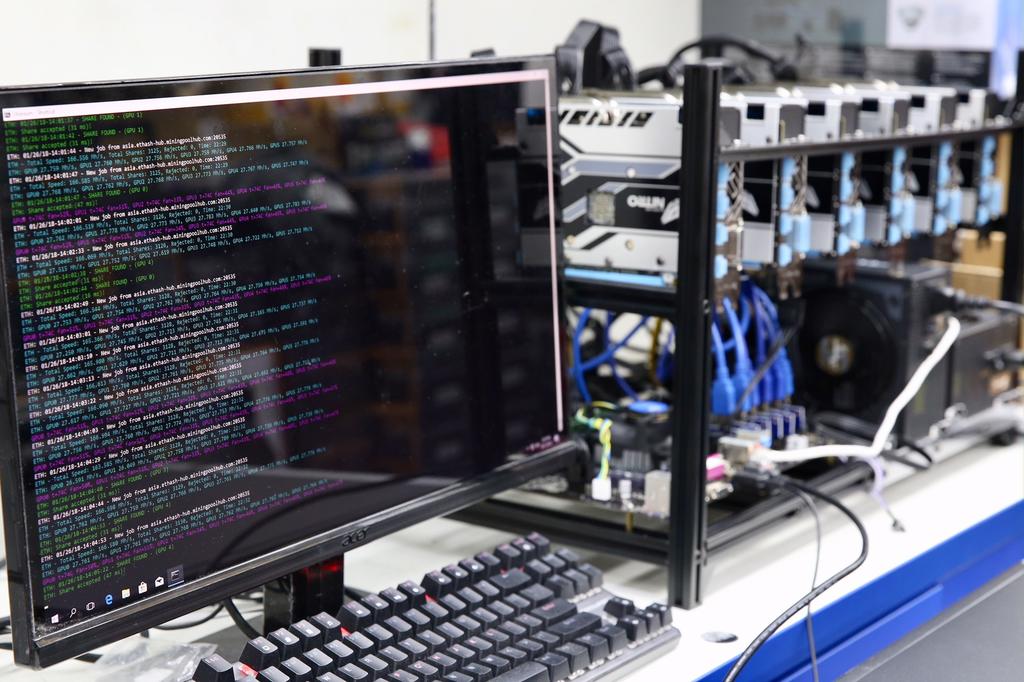
There is no cryptocurrency without mining
For virtual currencies to circulate, they must be verified. A competent institution must be able to verify each transaction to attest to the reality of the value circulating. In a classic world, audits are done by banks and various financial institutions. If we want to withdraw money from our bank card for example, the bank will check our available balance before granting us the amount we ask to have. In the field of cryptocurrencies, verifications are done on the blockchain or block chains. In addition, the blockchain is a set of calculators that take note of all cryptocurrency transactions that have been made since the very beginning.
Whatever type of cryptocurrency we use, transactions will be recorded on the blockchain. In this network, each transaction forms a block and all transactions are visible to the general public. As the demand for computing power increases day by day, the blockchain must be supported by third-party computers. It can be you or me as anyone ready to lend the power of its processor to strengthen the system. Indeed, as all transactions are peer-to-peer exchanges must be followed closely by calculators.
This is where mining comes in. So people who are willing to mine to help the network register on a mining platform. Then, they will simply lend the computing power of their computer so that the cryptocurrency network can work. In mining, minors receive a percentage in cryptocurrency. Generally, the miners receive Ethereum but they can exchange them in bitcoin.
Why are cryptocurrencies so popular?
Cryptocurrencies began to invade the world of Internet users in 2013. Talking about bitcoin has become commonplace and winning Ethereum, ripple, Cardano, Bitcoin Cash and so on, has become normal. Of course, the trend is not yet global, but it is beginning to take over internationally. So, why are cryptocurrencies so fashionable? People who use cryptocurrency rely heavily on the value of each token (cryptocurrency unit) they use. But above all, cryptocurrencies are gaining value because they do not depend on any central bank in the world. Then, they greatly facilitate online payments because the exchanges are done with almost 0 fees.
Cryptocurrency is also fashionable because it cannot be counterfeited. Indeed, thanks to the blockchain and the different strategies of hashing, it is almost impossible to usurp the tokens. Moreover, as everything is virtual and not related to government organizations and institutions, there are no coins or notes to counterfeit.
Aside from this craze for values that do not depend on government, cryptocurrencies are also fashionable because they are very easy to transfer. Indeed, it only takes a few minutes to receive or issue tokens. Linked to this, costs are lower and ceilings are not defined. So, crypto coins are fashionable because they are easy to use, they can have great value and they are not conditioned by intermediaries. Everything is in the ease of manipulation of the values. It is a kind of international value that can be used more freely and in addition, is not taxable.

How to buy and trade cryptocurrencies?
To have cryptocurrency, nothing easier. Go to a sales site or broker to buy the cryptocurrency that interests you. Among the most well-known brokers are Coinbase, Coinhouse, etoro, Binance, Kraken, and Livecoin. When you buy cryptocurrency, the broker will take a commission, verify your identity, and deliver the token according to its price.
Cryptocurrency trading To invest in cryptocurrency, many people opt for trading. Trading cryptocurrency is an activity that is gaining more and more ground because it allows you to earn money very quickly. However, the price of each token can vary in seconds so it is very important to stay alert. Vigilance is the order of the day, so you should pay attention to the curves disclosed by the trading sites when you enter this field.
There are several cryptocurrency trading sites on the net. you just have to register to be active and start the investment with a minimum of funds ($ 1 can do the trick). If you want to trade cryptocurrency, train yourself first. You must acquire the basics and know the weak points and strengths of each token. Do not run away on Bitcoin. While it is prosperous but is not always advisable unless the day of trading is conducive. It would be best to see YouTube tutorials, get in touch with regulars or just take classes. In short, find out a minimum to avoid unpleasant surprises. If you are lucky enough to be perfect self-taught and have affinities with the business world however, getting started on the job might be interesting.
In any case, cryptocurrency trading is like traditional trading. So, if you are an informed trader, you can also get started without worrying about training. Only, do the necessary to know the value of each token. Be shielded vis-à-vis knowledge. Take the time to read introductory pages of the most valuable tokens and even those with a definite future in the market.
Training to understand and make money with cryptocurrencies
It is possible to train in cryptocurrency to know them better. Several sites dedicated to the field offer training dedicated to the tokens and the best ways to invest them. It is mainly about trading but you would have the best bases by registering on these sites. Even if you do not know anything about cryptocurrencies, you can, of course, register on these sites.
The advantage of integrating online communities that form is the ability to make applications faster. If you are not too interested in these communities, you can always train directly with the people advised. By registering with Crypto Revolution, for example, you will be able to find different reasons to invest in the cryptocurrencies. You will actually learn how the system works. You will even be able to find the interest of investing in altcoin or rather altcoins.
Indeed, it is not just bitcoins on the market in terms of payment cryptocurrency. Altcoins or "alternative bitcoins" represent a growing value and you have to find out. Learn the different facets of all these tokens by forming yourself. This is the best advice you can get if you plan to put your money in the cryptocurrency.
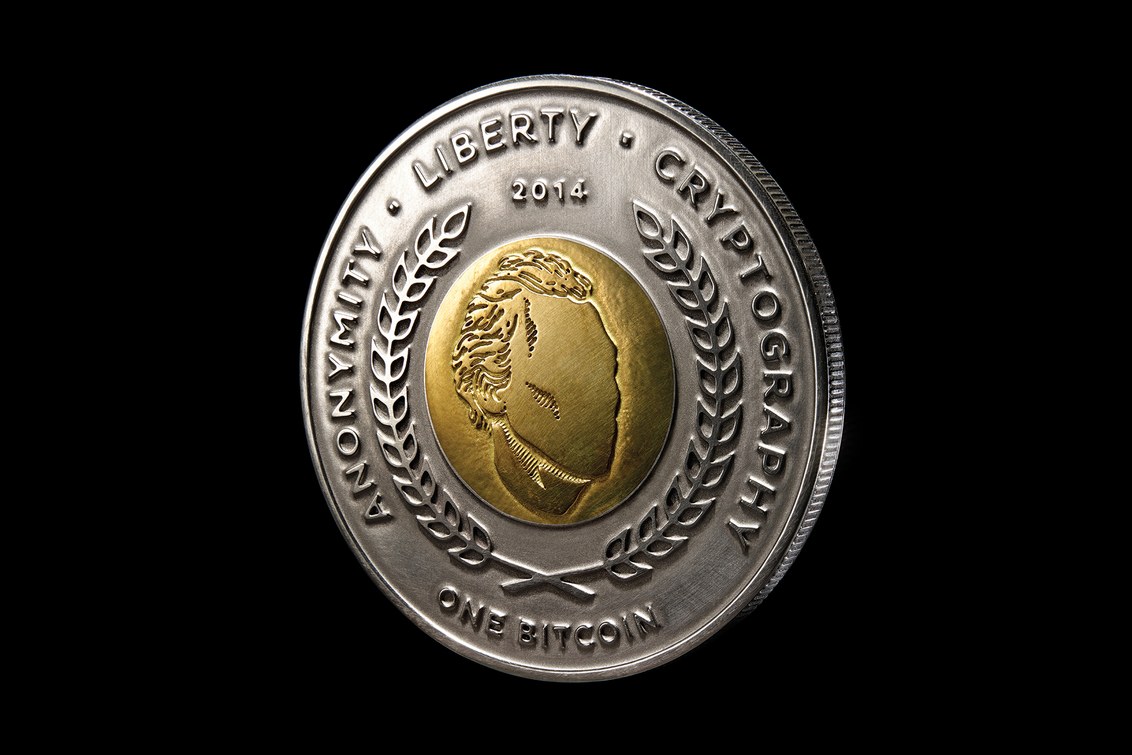
How crypto-currencies have become so important
Few people know this, but crypto-currencies have emerged as a by-product of another invention. Satoshi Nakamoto, the unknown inventor of Bitcoin, the first and ever-largest cryptocurrency, has never intended to invent a currency. His goal was to invent something; many people have failed to create digital currency before. The most important part of Satoshi's invention was that he found a way to build a decentralized digital currency system. In the 1990s, there were many attempts to create digital money, but they all failed.
After seeing all centralized attempts fail, Satoshi tried to build a digital currency system without a central entity. Like a Peer-to-Peer network for file sharing. This decision gave birth to cryptocurrency. Satoshi found the missing coins to make digital cash. The reason is a bit technical and complex, but if you understand it, you'll know more about cryptocurrencies than most people.
So, let's try to make things as easy as possible. To make digital currency or cryptocurrency, you need a payment network with accounts, balances, and transactions. It's easy to understand. A major problem that every payment network has to solve is to avoid what is called the double expense: to prevent an entity from spending twice the same amount. Usually, this is done by a central server that keeps a balance register.
In a decentralized network, you do not have this server. So you need each network entity to do this work. Each peer in the network must have a list of all transactions to check if future transactions are valid or if they are attempting to split a transaction. But how can these entities maintain consensus on these recordings?
If network peers do not agree on a single balance, no matter how small, everything is compromised. They need an absolute consensus. Usually, you take, once again, a central authority to declare the correct status of the balances. But how to reach a consensus without a central authority? Nobody knew it until Satoshi came out of nowhere. In fact, nobody thought it was even possible. Satoshi proved it was. Its main innovation has been to reach a consensus without a central authority. Crypto-currencies are part of this solution - the component that has made the solution exciting, fascinating, and has helped it spread around the world.
Miners create money and confirm transactions
Let's look at the mechanism that governs crypto-currency databases. A cryptocurrency like Bitcoin consists of a network of peers. Each pair has a record of the complete history of all transactions and therefore the balance of each account. A transaction is a file that says "Bob gives X Bitcoin to Alice" and is signed by Bob's private key. This is basic public key cryptography, nothing special at all. After the signature, a transaction is broadcast on the network, sent from one peer to another. This is the basic p2p (peer-to-peer) technology. Nothing special, again. The transaction is known almost immediately by the entire network. But it is only after a certain time that it is confirmed.
Confirmation is a critical concept for crypto-currencies. One could say that crypto-currencies are essentially a question of confirmation. As long as a transaction is not confirmed, it is pending and may be counterfeit. When a transaction is confirmed, it is engraved in stone. It is no longer falsifiable, it can not be reversed, it is part of an immutable record of historical transactions: the so-called blockchain.
Only minors can confirm transactions. It's their job in a cryptocurrency network. They take the transactions, mark them as legitimate and broadcast them in the network. After a transaction is confirmed by a minor, each node must add it to its database. She is now part of the blockchain. For this work, minors are rewarded with a token of cryptocurrency, for example with Bitcoins. Since the activity of the minor is the most important part of the cryptocurrency system, we should dwell there for a moment and take a closer look.
What are cryptocurrency miners doing concretely?
In principle, everyone can be minor. Since a decentralized network does not have the power to delegate this task, a cryptocurrency needs a mechanism to prevent a dominant party from abusing it. Imagine that someone creates thousands of peers and spreads fake transactions. The system would disorganize immediately.
Thus, Satoshi has established the rule that miners need to invest some of the work of their computers to qualify for this task. In fact, they have to find a hash - a product of a cryptographic function - that connects the new block to its predecessor. This is called Proof-of-Work. For Bitcoin, it is based on the SHA 256 Hash algorithm.
You do not need to understand the details of SHA 256. It is only important that you know that it is the basis of a cryptological puzzle that miners compete to solve. After finding a solution, a minor can build a block and add it to the blockchain. As an incentive, he has the right to add a transaction called "coinbase" which gives him a specific number of Bitcoins. This is the only way to create valid Bitcoins. Bitcoins can only be created if minors solve a cryptographic puzzle. Since the difficulty of this puzzle increases the power level of the computer that the miner has to provide, there is only a specific amount of cryptocurrency token that can be created in a given amount of time. This is part of the consensus that no network peer can transgress.
Revolutionary properties of crypto-currencies
If you think about it, Bitcoin, as a decentralized network of peers that maintain a consensus on accounts and balances, is more of a currency than the numbers you see in your bank account. What are these numbers more than database entries - a database that can be edited by people you do not see and by rules you do not know? Basically, crypto-currencies are token entries in decentralized consensus databases.
They are called CRYPTO currencies because the consensus maintenance process is secured by strong cryptography. Crypto-currencies are built on cryptography. They are not guaranteed by people or by trust, but by mathematics. An asteroid is more likely to fall on your house than a bitcoin address is compromised. To describe the properties of crypto-currencies, we have to separate the transactional and monetary properties. Although most crypto-currencies share a set of common properties, they are not engraved in stone.
Transactional properties Irreversible: After confirmation, a transaction cannot be canceled. Per person, and nobody means nobody. Neither you, nor your bank, nor the President of the United States, nor Satoshi, nor your minor. Nobody. If you send money, you send it. Nobody can help you, if you sent your funds to a scammer or if a hacker stole them from your computer. There is no safety net.
Pseudo-Anonymous: Neither transactions nor accounts are linked to real-world identities. You receive Bitcoins on so-called addresses, which are strings of about thirty characters that seem random. Although it is generally possible to analyze the flow of transactions, it is not necessarily possible to relate the real identity of users to these addresses.
Fast and global: Transactions are spread almost instantly across the network and confirmed in minutes. Because they occur in a global network of computers, they are completely indifferent to your physical location. It does not matter if I send Bitcoin to my neighbor or someone on the other side of the world.
Secure: Cryptocurrency funds are locked in a public key cryptography system. Only the owner of the private key can send cryptocurrency. Strong cryptography and the magic of large numbers makes it impossible to break this pattern. A Bitcoin address is safer than Fort Knox.
Without permission: You do not need to ask anyone to use cryptocurrency. This is the only software that everyone can download for free. After installing it, you can receive and send Bitcoins or other crypto-currencies. Nobody can stop you. There is no guard.
Cryptocurrencies: the dawn of a new economy Due mainly to their revolutionary properties, crypto-currencies have become a success. Their inventor, Satoshi Nakamoto, did not venture to dream of it. While all other attempts to create a digital currency system did not attract a critical mass of users, Bitcoin had something that provoked enthusiasm and fascination. Sometimes it's more like religion than technology. Cryptocurrencies are digital gold. A healthy currency and free from political influence. Money that promises to preserve and increase its value over time. Cryptocurrencies are also a fast and convenient means of payment with a global reach, and they are sufficiently private and anonymous to serve as a means of payment for black markets and other illegal economic activity.
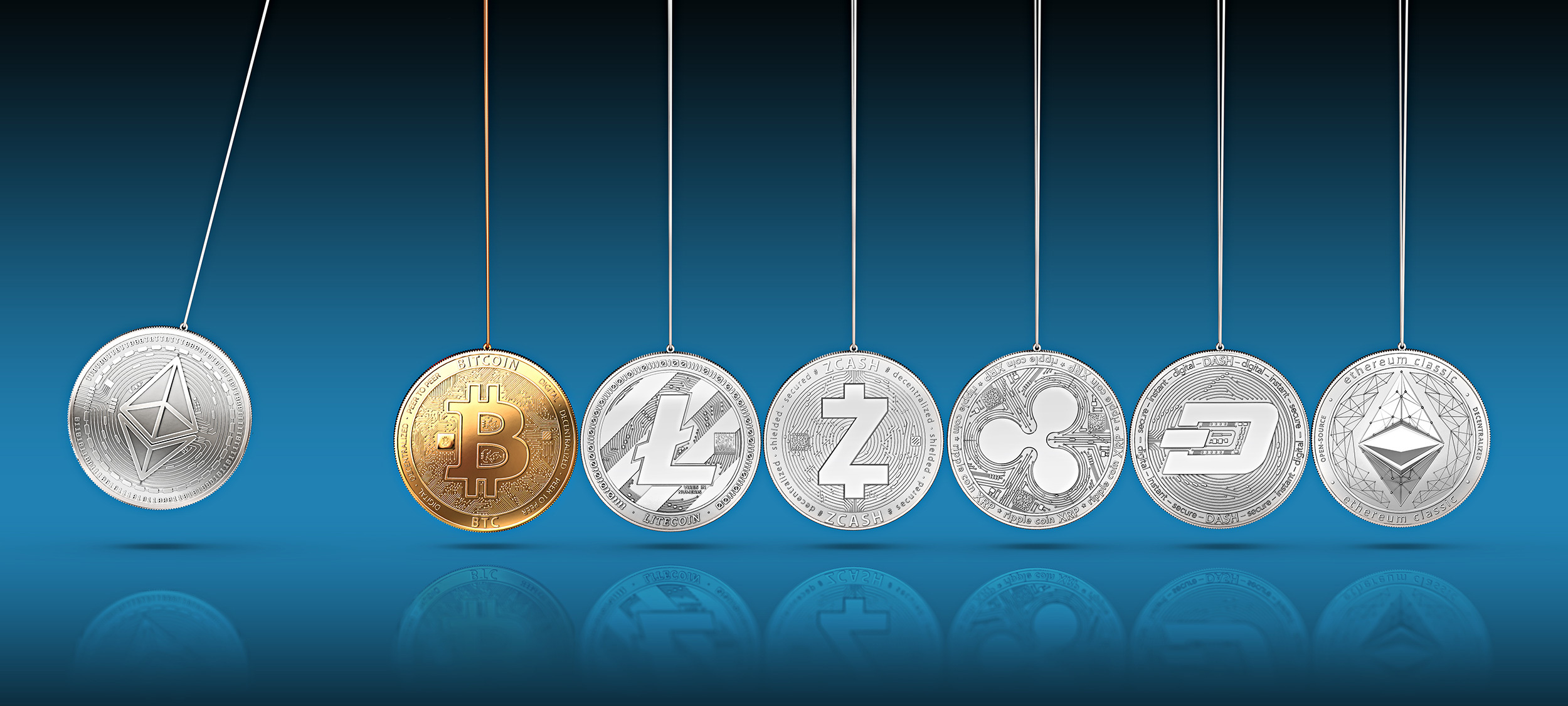
The 5 largest capitalization crypto-currencies
Bitcoin - The first cryptocurrency. The one and only, the first and most famous cryptocurrency. Bitcoin serves as a digital gold standard throughout the cryptocurrency industry. It is used as a means of global payment and is de facto the currency of cybercrime such as darknet markets or ransomware.
Ethereum - The reference cryptocurrency. The concept of young Vitalik Buterin rose to second place in the cryptocurrency hierarchy. Unlike Bitcoin, its blockchain not only validates a set of accounts and balances but also so-called states. This means that Ethereum can not only process transactions, but also complex contracts and programs. This flexibility makes Ethereum the perfect instrument for blockchain application. But that has a cost. After the hack of the DAO - a smart Ethereum-based contract - the developers decided to make a solid fork without consensus, which resulted in the emergence of Ethereum Classic. In addition to that, there are several Ethereum clones, and Ethereum itself is a host of several Tokens like DigixDAO and Augur. This makes Ethereum a family of crypto-currencies rather than a single currency.
Ripple - A cryptocurrency for finance. Perhaps the least popular - or most hated - project in the cryptocurrency community is Ripple. While Ripple has a native cryptocurrency - XRP - it's more of a network for dealing with IOUs than cryptocurrency itself. XRP, the currency, is not used to store and exchange value, but rather to protect the network against spam. Banks, however, seem to like Ripple. In any case, they are adopting the system at an increasing pace.
Litecoin - A lighter cryptocurrency. Litecoin was one of the first crypto-currencies after Bitcoin and was labeled as silver compared to digital gold bitcoin. Faster than Bitcoin, with a larger amount of token and a new mining algorithm, Litecoin was a true innovation, perfectly suited to be the smallest brother of bitcoin. "It has facilitated the emergence of several other crypto-currencies that have used its code base but made it even lighter." Examples are Dogecoin or Feathercoin. While Litecoin failed to find a real use case and lost its second place after Bitcoin, it is still actively developed and exchanged and is stored as a backup in case Bitcoin fails.
Monero - An anonymous cryptocurrency. Monero is the most important example of the cryptonite algorithm. This algorithm was invented to add the missing privacy features to Bitcoin. If you use Bitcoin, every transaction is documented in the blockchain and the transaction trace can be tracked. With the introduction of a concept called ring signature, the cryptonite algorithm has been able to break out of this path.In addition to these, there are hundreds of crypto-currencies of several families. Most of them are nothing more than attempts to reach investors and make quick money, but many promise playgrounds to test innovations in cryptocurrency technology.
What is the future of cryptocurrency? The cryptocurrency market is fast and wild. Almost every day, new crypto-currencies appear, old ones die, first-time adopters get richer and investors lose money. Every cryptocurrency comes with a promise, most of the time a great story to change the world.
Few survive the first few months, and most are pushed and abandoned immediately by speculators and live like zombie coins until the last of the holders loses hope of seeing a return on his investment. The markets are dirty. But that does not change the fact that crypto-currencies are here to stay - and here to change the world. It's already happening. People around the world are buying Bitcoin to protect themselves against the devaluation of their national currency. Especially in Asia, a live market for Bitcoin remittances has emerged, and Bitcoins using darknets of cybercrime are flourishing.
More and more companies are discovering the power of smart contracts or tokens on Ethereum, the first real application of blockchain technologies. The revolution is already underway. Institutional investors are starting to buy cryptocurrencies. Banks and governments are realizing that this invention has the potential to make them lose control. Crypto-currencies change the world. Step by step. You can both sit beside and watch - or you can be part of the story being worked on.

How to effectively anticipate the price of bitcoin?
Let's discuss some effective ways to predict the price of bitcoin for day trading. There are basically two methods for forecasting bitcoin prices using.
- Fundamental analysis - a method of valuing a security that entails attempting to measure its intrinsic value by examining related economic, financial and other qualitative and quantitative factors.
- Technical analysis - a trading discipline employed to evaluate investments and identify trading opportunities by analyzing statistical trends gathered from trading activity, such as price movement and volume.
In conclusion
Cryptocurrency is a very broad subject, but more or less easy to understand. Cryptocurrency is being used little by little in today's society. If major financial institutions fear the rise of these virtual values, we must place some confidence in the practice. In addition, cryptocurrencies can be converted into currency according to their nature. So, they are another way to make sure investments. Only, there is no point in rushing. It is necessary to take the time to get information and training because the area can be quite delicate as the value of the tokens varies from minute to minute.
Mainbloq launches Streaming Smart Order Router for trading cryptocurrency
- Mainbloq offers best execution to sophisticated digital asset traders through their Smart Order Router which has direct, streaming connections to exchanges for the fastest and best execution.
- Their Smart Order Router is live and currently trading cryptocurrency for their clients.
- Each client receives a dedicated Smart Order Router to execute from.
- The Smart Order Router can be used stand-alone or can be integrated into other trading platforms via API.
NEW YORK, Feb. 12, 2019 /PRNewswire/ -- Mainbloq launched their Streaming Smart Order Router for trading digital assets. The Router has direct market access via streaming connections to exchanges enabling the fastest execution. It executes cross-exchange trades for the best price with the click of one button >> MORE HERE
Bitcoin Cash payment API Gateway.cash launches new features
Author: Jamie Redman / Source: Bitcoin News
Last October, news.Bitcoin.com reported on a new Bitcoin Cash (BCH) payment processor called Gateway.cash. Since then the Gateway developers have added a variety of features to the BCH platform like instant web-sockets, custom audio, and client-side callbacks for real-time applications.
Also read: How to Spend and Give Bitcoin Cash Over the Holidays
After the BCH Split Organizations Like Gateway.cash Have Emphasized ‘We Will Compete’

After the Bitcoin Cash split, the Money Button and Yours.org creator Ryan X Charles told his Twitter followers his apps would be following the BSV network. Four days later on Twitter, Charles said: “I look forward to seeing the ABC competitors to Yours and Money Button — Best of luck to you all.” Not too long after the post, a new Bitcoin Cash blogging website was launched called Honest Cash and the payment processor Gateway responded to Charle’s tweet.
“Hi, Gateway.cash will be a Money Button competitor for Bitcoin Cash and is now released open-source — The project is led by Ty Everett and he is looking for contributors,” the Gateway organization stated responding to Charles on Nov. 19.

New API Enhancements
Since the Gateway bitcoin cash-powered payment button and the processing application launched, the developer has added a slew of new features to the application program interface (API). Added enhancements include callback URLs, native currencies, custom audio sounds, client-side callbacks for real-time applications, instant web-socket payments, direct deposit to an address, and more. The Gateway developers have also published specifications for the Gateway.cash API which gives...
A guide to understanding cryptography in blockchain technology
Source: Crush Crypto
The creation of Bitcoin in 2009 marked the birth of the first digital currency to achieve widespread adoption across the globe. However, the concept of a secure digital currency has been around since the 1980s and there have been many previous attempts that directly inspired Satoshi Nakamoto’s creation of Bitcoin.
- Encryption: Encoding text into an unreadable format.
- Decryption: Reserving encryption – converting a jumbled message into its original form.
- Cipher: An algorithm for performing encryption or decryption, usually a well-defined set of steps that can be followed.
Cryptography before the modern age was synonymous to encryption – the process of converting information from a readable format to something that makes no sense. Encryption techniques date back as far as the ancient Egyptians, and have roots spanning all throughout history.
For example, the Caesar Cipher is a famous cipher used by Julius Caesar to securely communicate with his generals. The cipher “shifts” each letter in a message by a certain amount – with a shift of 2, A would become C, B would become D, and so on.
Blockchain technology makes use of cryptography in multiple different ways – for wallets, transactions, security, and privacy-preserving protocols. This article will cover some important cryptography topics that relate to blockchain technology including public-key cryptography, hashing, and Merkle trees.
Public-key cryptography (also called asymmetric cryptography) is a cryptographic system that uses a pair of keys – a public key and a private key. The public key may be widely distributed, but the private key is meant to be known only by its owner. Keys are always created in a pair – every public key must have a corresponding private key.
Public-key cryptography is most often used for encrypting messages between two people or two computers in a secure way. Anyone can use someone’s public key to encrypt a message, but once encrypted, the only way to decrypt that message is by using the corresponding private key.
Let’s say Alice wants to send an encrypted message to Bob. It would work like this:
- Alice uses Bob’s public key to encrypt the message.
- Alice sends the encrypted message to Bob – if a third party intercepted it, all they would see is random numbers and letters.
- Bob uses his private key to decrypt and read the message.
A diagram illustrating this process is shown below:

Public-key cryptography is a fundamental element of blockchain technology – it is the underlying technology for wallets and transactions. When a user creates a wallet on a blockchain, they are generating a public-private key pair.
The address of that wallet, or how it’s represented on the blockchain, is a string of numbers and letters generated from the public key. Due to the nature of blockchain technology, this address is public to everyone and can be used to check the balance in that wallet or send coins to it.
The private key associated with a wallet is how to prove ownership and control the wallet. It is the only way to send coins out of it, and a lost private key means the coins inside will be stuck there forever.
A transaction on the blockchain is nothing more than a broadcasted message that essentially says, “Take X coins from my wallet and credit X coins into another wallet”. Once confirmed, the transaction is immutably written into the ledger, and the balances are updated.
However, this transaction message requires a signature from the private key of the sending wallet to be valid. After broadcasting, anyone can use that wallet’s public key to ensure the digital signature coming from the private key is authentic. This is one role of block validators before they add any transaction (i.e. message) to the blockchain.
Cryptographic hashing is another fundamental piece of blockchain technology and is directly responsible for producing immutability – one of blockchain’s most...










